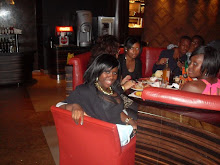Cinematography
What is cinematography?
1 The art of lighting and camera choices/positioning when recording photographic images for the cinema. It’s closely linked to still photography. A cinematographer is the person who sets up the camera and lighting for each shot. They have a big influence on how the tone or look of a shot is to be shown –they are sometimes known as the director.
Kieslowski – three colours
2 As you can see in the above, Kielslowski, a Polish director and screenwriter, talks about the use of Cinematography in his film “Three Colours”. We acknowledge the reason why he uses the colours of the French flag as themes. He goes on to talk about the close-up of Juliet, dipping the sugar cube into her tea and the significance of it, was to show a heroines world from her point of view – her feelings on her wanting to be in a smaller world. He also goes on to say , that to get the perfect shot and to create that feeling the pace and timing have to be spot on, therefore taking a lot of preparation. Cinematography in this shot creates and shows the audience that this shot is somehow important.
Christopher – master class on cin.
Doyle talks about the use of camera and lighting working together in a form of space. His says in his world, space can be formed by lighting order to create cinematography. He also states that mise-en-scene also helps to create a story. He gives an example of a sense of a loss on a wall - saying it's just a wall without lighting but if we were to add lighting to this wall - it goes up a level of creating that loss, additional to the camera. It all works together. He goes on to say Camera movements are a dance between actors and the camera shots basically meaning that actions of the actors and camera movements have to flow and link together. The dance is what really engages people and how it works. He talks about the colours of lighting and how they suggest certain emotions- it's like an under painting - like art. We have to think about issues with your audience, themes, and setting e.g. asain women's issues with having lighter skin. All theses issues and methods have made us think about how we need to portray our film through cinematography.
- Gordon Willis talks about godfather.
Willis kind of goes against traditional views of cinematography. He sees it in a different way. He does things that have never been done or seen before. For example, he form of lighting – he talks about making the person work with the film. Deliberately making the light dim so that characters are hardly seen, creating a sense of unknowing. He made an art of under exposure. He made a trend of using yellow/ reddy lighting look in his films giving a brassy feeling. He claims it’s not one thing that you do from a visual point of view that makes things work- everything has to be right. Lighting has to communicate with mise-en-scene, camera and the action happening. This is exactly what we have to take on broad with our film to get the best outcome.
Monday, 14 December 2009
Subscribe to:
Post Comments (Atom)


No comments:
Post a Comment